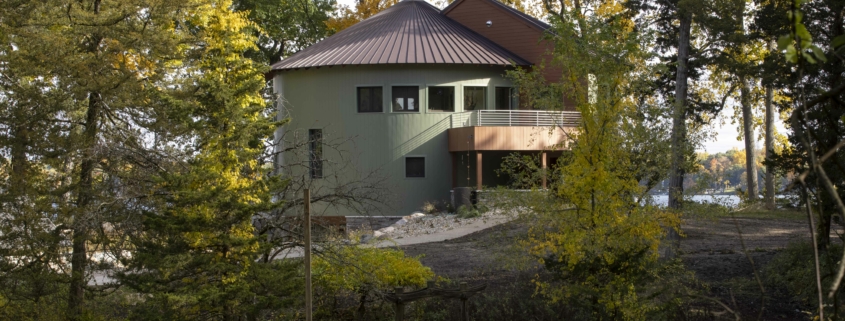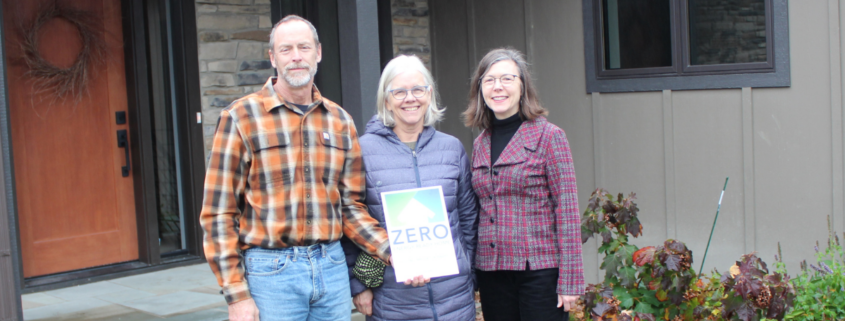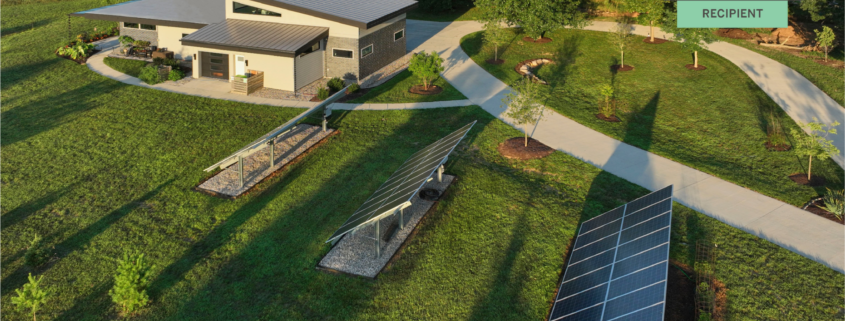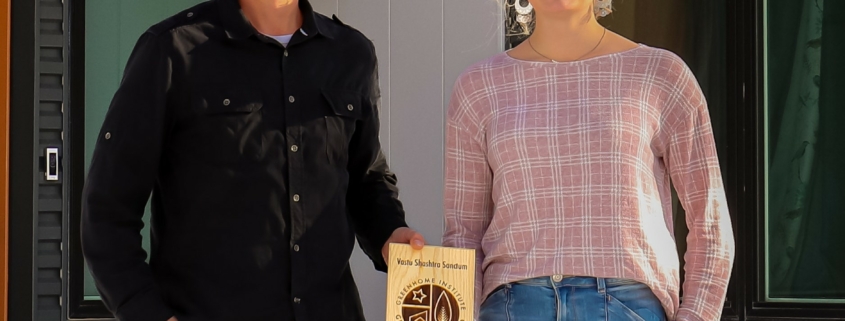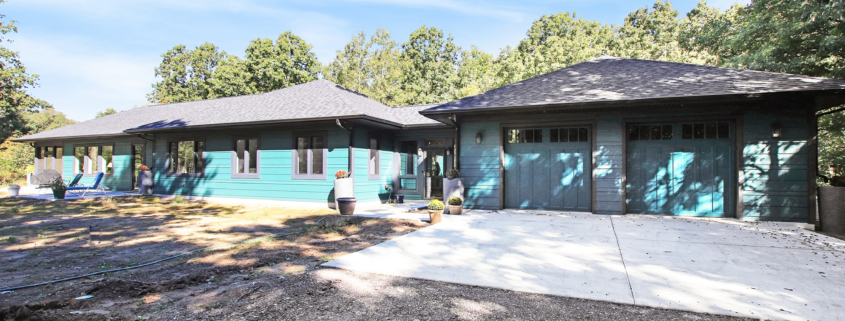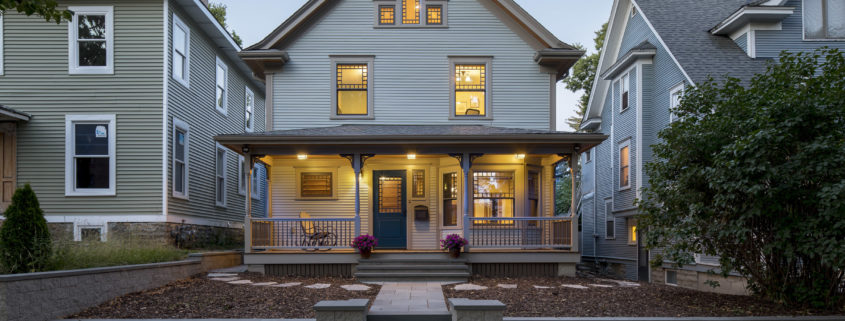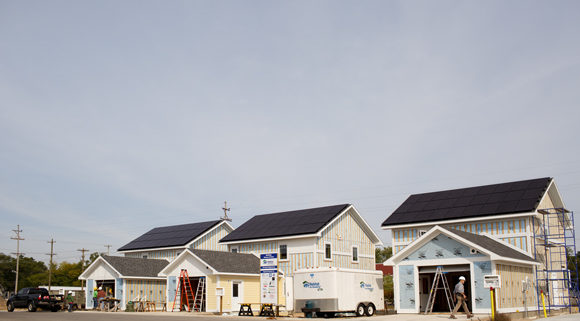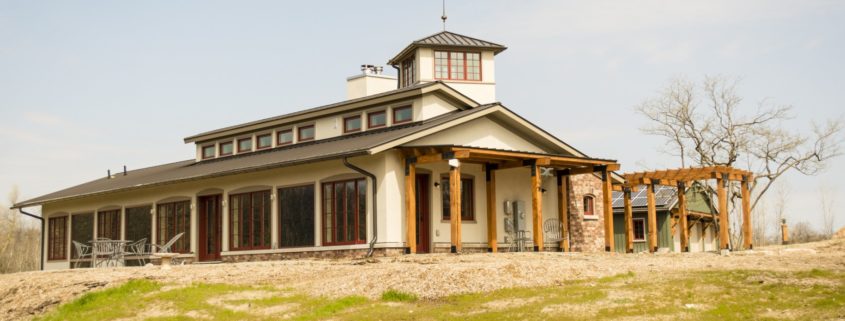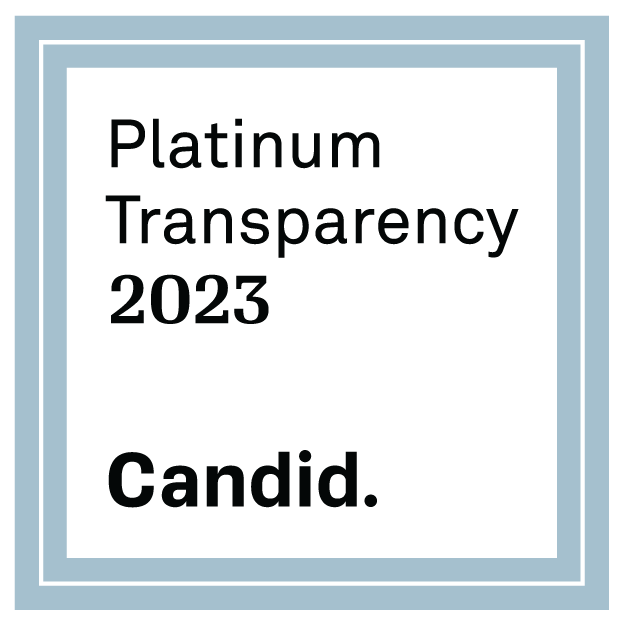Member New Leaf Home Design wins DOE Housing Innovation Award.
/0 Comments/in Local, Green Home Institute, Net Zero, Ohio, Project Profile, Project Type, Single-Family Projects, Zero Energy Capable/by Brett Little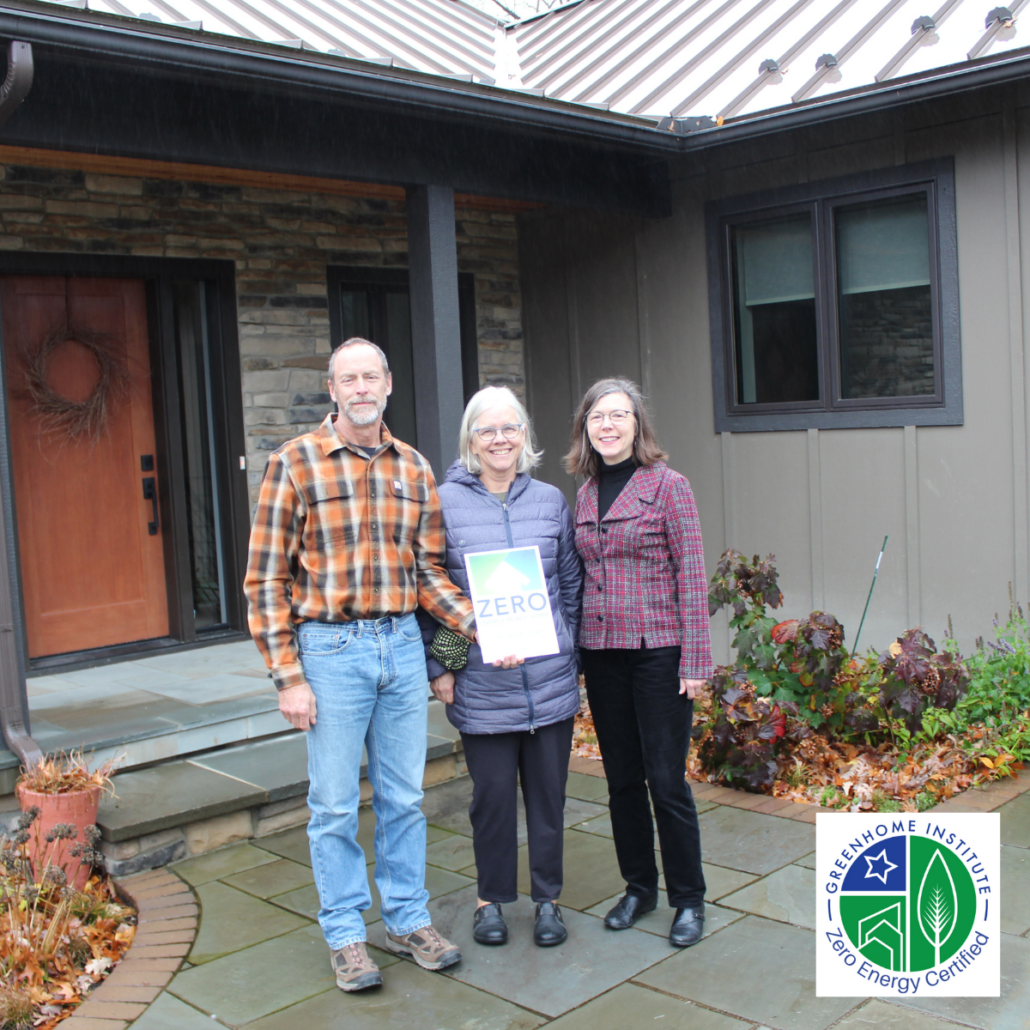
GHI member New Leaf Home Design, LLC, is excited to announce their Moreland Hills home project has been honored as a recipient of the 2023 Housing Innovation Award! This project is also certified under the GHI Zero Energy Home Certification program because it met the DOE Zero Energy Ready Certification, achieved a negative 2 HERS rating by a certified rater.
As a “Zero Energy Ready”, a distinction that places it among the nation’s finest in the realm of high-performance residential architecture. The Zero Energy Ready verification process confirms the home’s ability to provide exceptional energy efficiency, indoor air quality, comfort, and construction quality.
The Moreland Hills home stands as a prime example of how thoughtful design, precise construction, and renewable energy can converge to create a residence that’s both visually stunning and environmentally responsible. Designed to take advantage of its ravine views, the home is also oriented to maximize the efficiency of its solar panels. With 4 bedrooms, 3 bathrooms, and a spacious 3900 square feet of finished area, it has a HERS index of -2, a testament to its net-positive energy efficiency.
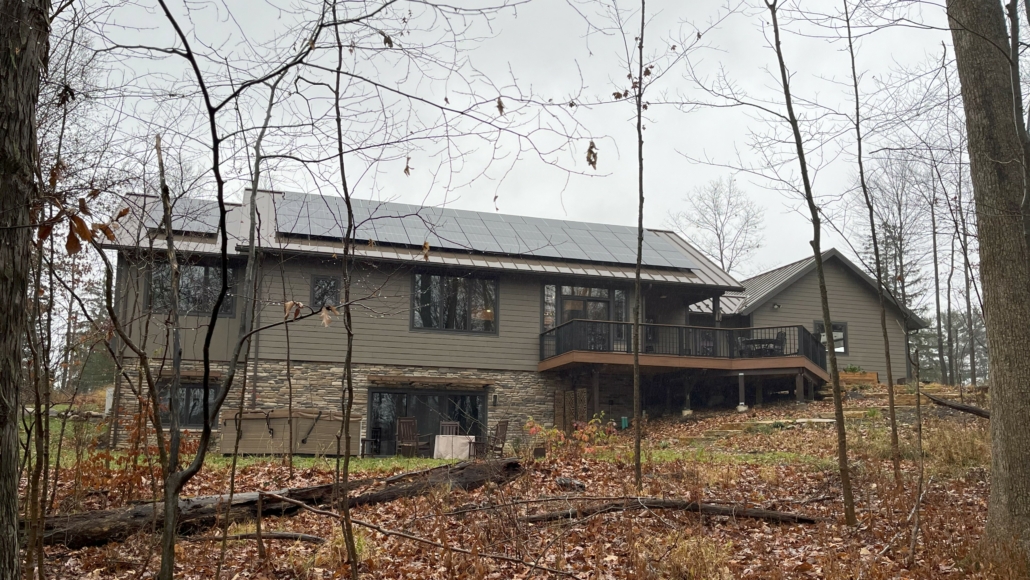
The homeowners are thrilled with the outcome. They shared, “We knew we wanted to mirror the land and build a functional, beautiful house that was sustainable and energy efficient. We have lived here for one year now, and the craftsmanship, efficiency, and livability have far exceeded our expectations. It is a joy to be in the house with the views of mature woods and new native landscaping. “
Hallie Bowie, the architect behind New Leaf Home Design, LLC, expressed her enthusiasm for the recognition: “We are immensely proud to receive the 2023 Housing Innovation Award. It reflects our dedication to high-performance home construction and electrification. Building green is no longer a cutting-edge approach used by just a few people on a handful of projects. The details and systems for sustainable construction have been implemented on thousands of homes, and researchers have verified their performance over decades of use. This award recognizes our implementation of these proven strategies.”
Cornerstone Construction of Northeast Ohio, the general contractor for the project who previously achieved LEED Platinum certification on a previous home with GHI, played a crucial role in bringing this vision to life. Their detail-oriented commitment to quality construction and sustainability mirrored that of New Leaf Home Design, LLC, resulting in this outstanding achievement.
This is who GHI Members are
This is what GHI members do
So can you!
Get signed up here today
The 713 Project: For the Journey Wins the outstanding LEED project award
/0 Comments/in Local, Certified Homes, Certified LEED, LEED Gold, Michigan, Net Zero, Zero Energy Capable/by Brett LittleVastu Shastra Sanctum GreenStar Silver GHI Zero Energy Certified
/0 Comments/in Local, Certified Homes, Green Home Institute, GreenStar, GS SIlver, Michigan, Net Zero, New Home, Zero Energy Capable/by Brett LittleCome See the GHI Executive Director, Brett Little, Speak at the Net Zero Build Summit in Novi, Michigan on March 24-25, 2020
/0 Comments/in Local, Education and Events, Green Communities, Green Home Institute, Michigan, michigan--local, Net Zero/by Brett LittleDue to COVID-19, this event is postponed and will be hosted on August 25-26, 2020. 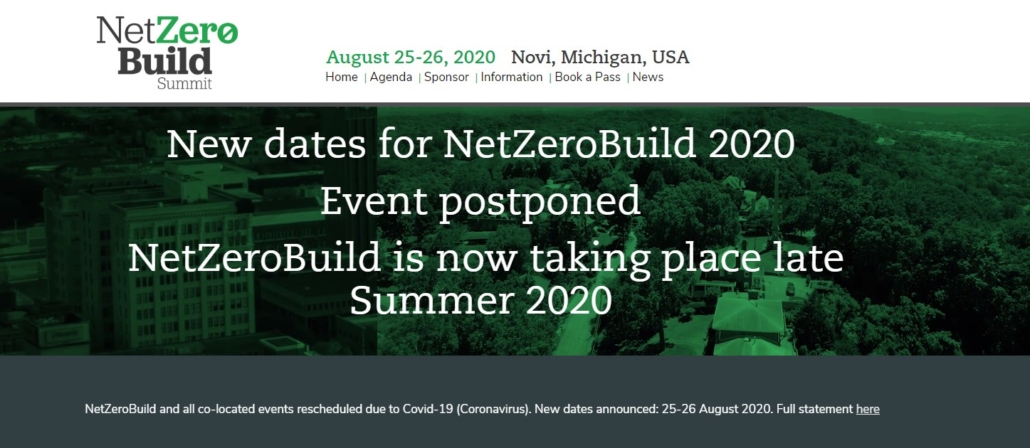
Prickly Pear Sanctuary goes GreenStar Platinum
/0 Comments/in Green Home Institute, GreenStar, GS Platinum, Net Zero, Zero Energy Capable/by Brett LittleMN Net Zero Victorian Gut Rehab Officially is Certified Net Zero Energy
/0 Comments/in Local, Certified Homes, Certified LEED, GreenStar, GS Gold, Gut Rehab, LEED Platinum, Minnesota, Net Zero, Project Profile, Project Type, Zero Energy Capable, Zero Hero Award/by Brett LittleGrand Traverse Habitat For Humanity Depot Neighborhood goes LEED Platinum & Zero Energy
/0 Comments/in Local, Affordable Housing, Certified Homes, Certified LEED, LEED Platinum, Michigan, Net Zero, New Home, Platinum, Project Profile, Single-Family Projects, Zero Energy Capable, Zero Hero Award/by Brett LittleBurh Becc @ Beacon Springs LEED Platinum & Zero Energy Capable Certified
/0 Comments/in Local, Certified Homes, Certified LEED, LEED Platinum, Michigan, Net Zero, New Home, Platinum, Project Profile, Project Type, Single-Family Projects, Zero Energy Capable, Zero Hero Award/by Brett LittleOhm Sweet Ohm – LEED Platinum, Zero Energy Capable
/0 Comments/in Local, Certified LEED, Green Home Institute, GreenStar, LEED Platinum, Minnesota, Net Zero, New Home, Project Profile, Project Type, Single-Family Projects, Zero Energy Capable, Zero Hero Award/by Brett LittleMenu
GreenHome Institute
GreenHome Institute
ATTN José Reyna
1451 Lake Drive SE, #6484
Grand Rapids, MI 49516
Tel: (616) 458-6733
Email: info@greenhomeinstitute.org
About Us
Recent Posts
- April 2024 GreenHome and Sustainability Jobs Round-Up.
- Protected: Public comment on Inflation Reduction Act Home Rebates opening in MI and beyond
- Shawn Neinhouse completed Certified GreenHome Professional Training
- Please take this MSU Student’s Mass Timber Survey
- Clean Energy Credit Union Clean Energy For All Reduces Barriers

